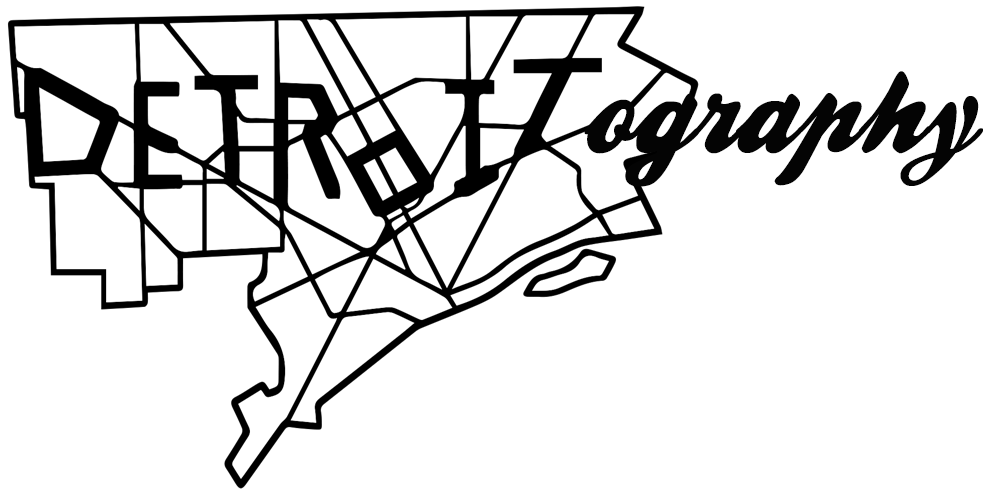 Even Ford Motor Company wasn’t beyond fantasizing about regional rapid transit and recognized the crucial role for rail rapid transit in the growing metro Detroit region. In the 1970 report, “Master Plan for Ford Properties” by William L. Pereira & Associates, an 81-mile rapid transit plan is laid out according to the TALUS study. At this time, supposedly a commuter line (2 trains per day) was already running between Pontiac and Detroit. The main lines important for Ford were:
Even Ford Motor Company wasn’t beyond fantasizing about regional rapid transit and recognized the crucial role for rail rapid transit in the growing metro Detroit region. In the 1970 report, “Master Plan for Ford Properties” by William L. Pereira & Associates, an 81-mile rapid transit plan is laid out according to the TALUS study. At this time, supposedly a commuter line (2 trains per day) was already running between Pontiac and Detroit. The main lines important for Ford were:
Grand River-Schoolcraft Line
“[…] conveniently located for the low-income low-auto-ownership residents of the area. Six more stations serve an estensive residential corridor of about eight miles lying directly north of the site. In a second phase, the line would continue to Merriman Road […]”
Michigan-Airport Line
“[…] this line on the system originates in the Central Business District running in subway under Michigan Avenue to the Lodge Freeway and sharing some stations with the Grand River-Schoolcraft line in the CBD. […] In a second phase, the Michigan-Airport line continues along the Penn Central right-of-way, wit stations in West Dearborn and Inkster.”
The planners recognized that the feasibility and funding weren’t there for the comprehensive rapid transit system and so proposed an interim system that connected Downtown to the Metro Airport due to the expected population increase in that general area of Wayne County. This sounds much like the commuter rail development that SEMCOG is trying to establish between Ann Arbor and Detroit, over 40 years in the making.
The report closes, noting that “[…] all large scale development in the future must take into account the possibility of rapid transit.”

Actually, in the early 1970s, rail rapid transit in metro Detroit was not fantasy, but reality. Ann Arbor-Detroit and Pontiac-Detroit commuter service operated several times each day along the same tracks now traveled by Amtrak’s “Wolverine.” These services were then taken over by the Southeastern Michigan Transportation Authority (SEMTA) until suburban disinterest in funding the service brought an end to it in the 1980s. Photos here: http://railroadfan.com/phpbb/viewtopic.php?f=3&t=22790
The 1970s also saw extensive discussion of a broader rapid transit network, to be constructed by SEMTA, with a Woodward Avenue heavy rail line as its centerpiece. First proposed by Detroit Mayor Cavanagh, the Woodward line (which would have run as a subway on the Midtown-downtown portion) was bitterly fought by a range of Oakland County elected officials. State Rep. Alice Tomboulian was defeated in her 1980 reelection bid by an opponent who accused her of “favoring Wayne County, not Oakland County” in supporting the subway plan. The result was the eventual abandonment of SEMTA and its re-organization as the more skeletal SMART.
Ford itself had proposed a variety of rapid transit plans earlier in the company’s history, when most Ford workers relied on buses and streetcars to reach their plants. After shifting production to the River Rouge facility from Highland Park, Ford led an automaker-backed campaign for a Detroit-Dearborn subway that would have allowed easier access for Ford workers. However, most Detroit voters viewed this as a clear-cut case of corporate welfare – for a company which had abandoned Detroit, no less – and voted down the subway proposal in 1929.
In the decades that followed, the automakers’ interest in transit diminished as car ownership grew more ubiquitous. GM, of course, did scheme to replace streetcar systems across the country with GM-made buses, but this was not a conspiracy against transit per se. In Detroit, some halting efforts were made to establish express bus routes on freeways, but these efforts didn’t get far. Automakers did grow quite interested in People Mover systems, however, on the theory that they would remove pedestrians from downtown streets and allow automobiles to move more quickly. Ford, among others, invested heavily in People Mover research and constructed a “People Mover” elevated busway at its Fairlane development, between the mall and what is now the Adoba Hotel.